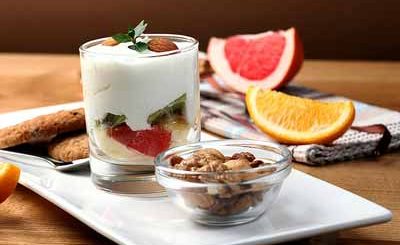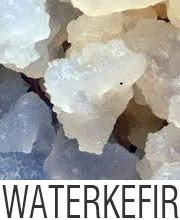How to make milk Kefir?
Make milk Kefir at home
Milk Kefir (usually pronounced as keh-FEER) is a slightly carbonated but delicious milk beverage, fermented and similar to buttermilk or yogurt. Kefir is only fermented milk (room temperature) with kefir grains for almost 24 hours. It has incredible health benefits, is flavorsome, and is endured well, even with my lactose intolerance. It’s easier to prepare than yogurt because it involves no heating/ incubating. Moreover, kefir has a larger spectrum of probiotics when compared to yogurt. Sustainable, reusable kefir grains make it economical.
With the popularity of kefir comes misinformation accompanied by deceiving products. Authentic milk kefir is only made with live milk kefir grains instead of any pre-made powder (or store-purchased kefir). Kefir that is available in stores is a mere imitation. Natural and healthy kefir can be made only with experience at home.
The ingredients
- A tablespoon of kefir grains
- Fresh milk
Milk Kefir Recipe
- Pour the milk kefir grains into a glass jar. Fill two-thirds of the pot with fresh milk. Cover it using a cloth or the lid of the jar. (If you are putting the lid on it, don’t fill above two-thirds)
- Leave the contents at room temperature for up to about 24 hours. Forty-eight hours makes it thicker and sourer. Twelve hours makes it sweeter and thinner.
- The temperature affects how quickly this culture works. As a result, during the summer months, milk kefir ferments faster.
- Once it is ready, strain the kefir in a jar.
- While fermenting, the kefir grains float on the milk with cream. So, gently mix the solids and liquids using a wooden spoon. That way, it gets easier to strain. Use a clean wooden spoon or hands to scoop the culture from this kefir (it is easy to separate and feel from liquids).
- Kefir culture gives birth to a jelly polysaccharide substance that develops around grains, looking ‘gloopy.’ Its name is kefiran, and it bears unique properties. As you scoop the kefir grains, you might find them coated with a gel-like substance. Providing a good stir to the kefir distributes the kefiran and contributes to its thickness. (This is, however, variable, some strains produce a lot while others do not that much.)
Note for Cleanliness and Storage of Milk Kefir
The post is straining, and these grains are to be placed back in a jar without washing. Fresh milk is to be poured into the grains to make another batch. Ensure everything you use is well-cleaned (pots, hands, and implements). You wouldn’t indeed like to contaminate a living culture. Store the prepared kefir in your fridge in any glass jar. You may keep adding new batches of milk kefir to the pot and shake to mix.
How do I make kefir without buying kefir grains?
You can, depending on your meaning of milk kefir! Milk kefir grains are a culture of a particularly unique mix of microorganisms. Without milk kefir grains, including all the bacteria, yeasts, and polysaccharide kefiran, it is impossible to produce milk kefir. If you currently possess milk kefir grains, you can multiply them under the appropriate conditions.
A kefir starting culture, a powdered mixture that duplicates the cultures in the milk kefir grains, can produce milk kefir. These powdered starting cultures produce a cultured dairy product comparable in flavor and consistency to milk kefir made from grains. Still, it does not possess the identical qualities of kefir created from grains and will not grow endlessly like milk kefir grains.
Where to get kefir grains?
Choose the best kefir culture that suits your needs
Choosing the appropriate milk kefir culture must be based on your requirements. You can choose between the two kefir cultures – milk kefir grains and direct-set culture – based on what you want in your cultured kefir, how much you wish to make, and how long you want to continue creating kefir.
If you prefer a primary cultured dairy product containing some of the bacteria found in conventional milk kefir, a kefir starter culture could be the appropriate choice. On the other hand, if you prefer to produce milk kefir for the specific strains of bacteria and yeasts and the more even polysaccharide kefiran, then you need to acquire milk kefir grains.
If you only want to create milk kefir sometimes, a kefir culture starter may be the preferable choice. However, if you want to prepare a new batch of milk kefir every day or two, you may find that milk kefir grains are a better option.
A kefir culture starter may be the most practical solution if you are only interested in making milk kefir for a brief time. If, on the other hand, you want a culture starter that can be used repeatedly, milk kefir grains are a more practical solution.
Where to buy kefir grains and which grains to buy best
Dehydrated kefir grains
Milk kefir grains begin in a new state. Maintaining the required temperatures and feedings while carrying or shipping the kefir grains is challenging. As a result, kefir grains are frequently offered in a dehydrated state. Dehydrated kefir grains are inactive, and although they should be handled with care, they are not as brittle as fresh grains. Dehydration does cause slight stress in all kefir cultures, but with the correct activation, they should be back on their feet in no time.
Additionally, dried kefir grains benefit from a more prolonged shelf life. This is useful since it allows you a buffer of time both during the grains’ transportation and after receiving them. Therefore, if it takes three or four days to ship your kefir grains, you won’t be able to start them for another week, which will kill live grains but not dehydrated grains.
Fresh kefir grains
You can get fresh kefir grains from a relative who already makes kefir at home if you have faith that they have preserved their grains in a healthy state. Live kefir grains can also be ordered online from stores, but they must be sent quickly under ideal weather conditions and placed in fresh milk as soon as they arrive; otherwise, the cultures may perish due to temperature fluctuations or lack of sustenance.
MILK KEFIR STARTER KIT ONLY € 29.99
What’s next on buying kefir grains?
Whether you make kefir with a starter culture or kefir grains, we’re thrilled you’re contemplating incorporating this delicious, fermented food into your diet! KefirShop.eu is ready to assist you with all your milk kefir ambitions by providing an incredible selection of items. Their Milk Kefir Starter Kit contains everything you need in one convenient package. Including tools and milk kefir grains, this kit makes it as simple as possible to start manufacturing milk kefir at home. If you’re a bit more experienced, we have the best milk kefir grains to use immediately! Check out the selection of Milk Kefir items, and when you’re ready to get started, get a Milk Kefir Starter Kit. You can succeed!
A complete milk kefir recipe book is included to learn more about kefir grains and how to produce delicious milk kefir at home. It is filled with tips, tricks, and recipes.
Buy a Milk Kefir Starter Kit
Where to buy live milk kefir grains?
Buy FRESH milk kefir grains here. These live milk kefir grains are essential to me, and I want to ensure I find the best way to ship them to you comfortably. I put these live grains in a sachet with some fresh milk. Then I give them a probiotic supplement to their diet and send them through Priority Mail. On Mondays, I send them to you. This gives my kefir grains time to grow and multiply each week. I adore these kefir grains, and I hope you will as well. They will begin making kefir as soon as you receive them. These grains need not be rehydrated since they are ready to use. If you look after them, they will look after you for the rest of your life!
Can kefir grains be bought in a grocery store?
Numerous websites sell kefir grains, and many will mail the grains directly to you. Health food stores may have kefir grains, whereas specialty culture shops will carry a variety of types.
Can kefir grains be obtained from store-bought kefir?
The kefir powder used to manufacture store-bought kefir prevents the formation of kefir grains. The product is significantly different when manufacturing kefir (milk or water) at home since the kefir grains must be strained out.
Are all kefir grains the same?
Are kefir grains identical? All kefir grains are similar but not identical. Similarly to how all humans are human, but none are alike, each kefir is unique. Some kefir grains ferment faster than others, while others are more sour, sweet, or carbonated.
How do you make kefir without using grains?
Kefir cannot be made without kefir grains. The ‘kefir grains’ are bacteria and yeast that resemble miniature cauliflower and are held together by a kefiran polysaccharide matrix. If you know someone who already produces kefir, request a small amount from them; a whole teaspoon will suffice to make your own.











